What Effects Did Animals Have On World War Ii How Were Animals Used In World War 2
Beasts in Battle: 15 Amazing Brute Recruits in State of war
Introduction
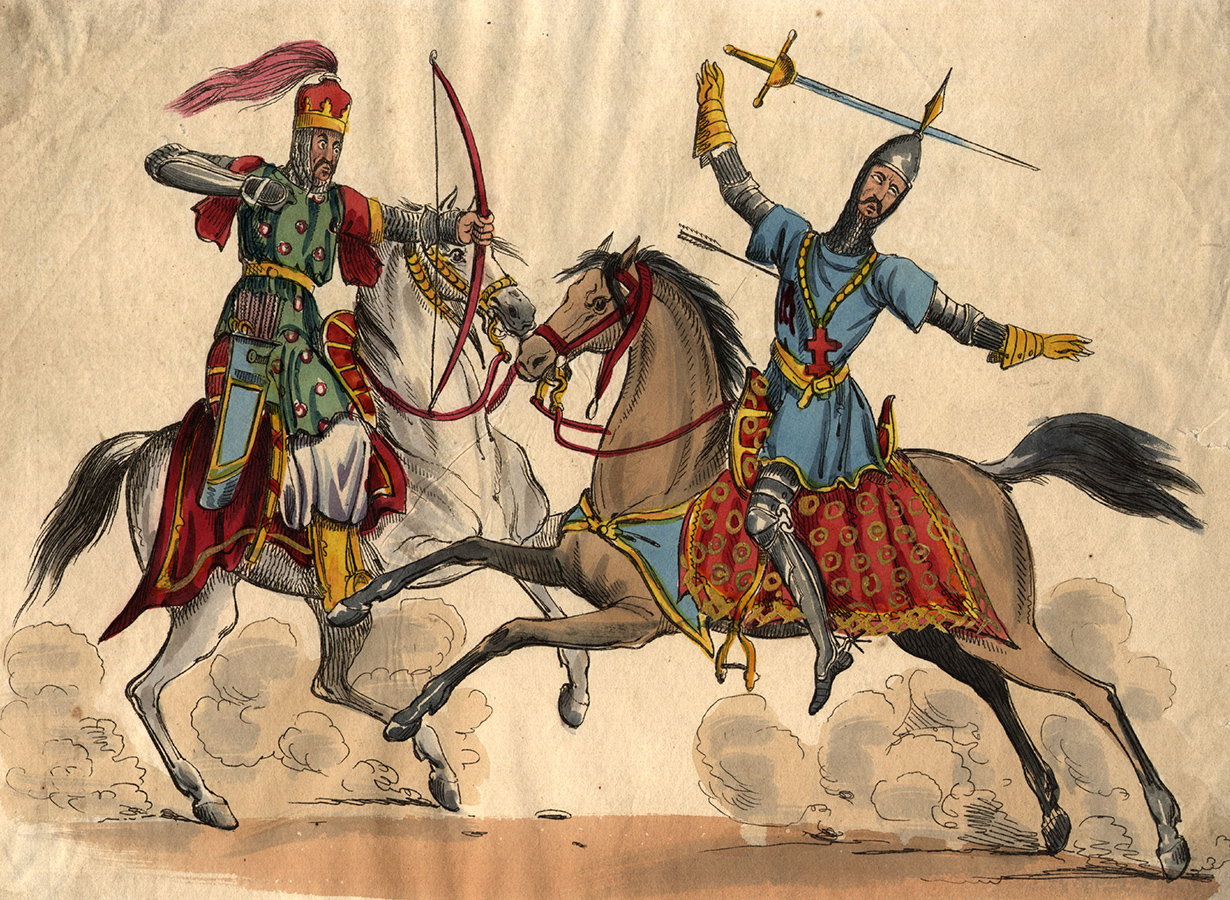
Humans have enlisted animals to help fight their wars since prehistoric times, and some of the world'due south earliest historical sources tell of battles between ancient warlords in horse-fatigued chariots. Dogs and horses were probably the starting time animals used in war, and many are still used today in modern armed forces and police tasks.
But, an even wider range of creatures have been used to fight human battles throughout history. Here we count down some of the unwitting animals that have been recruited to fight in both ancient and modern warfare.
Related: What Really Happens to Fighting Bulls Afterward the Fight?
Pigeons

Pigeons have been used to carry letters since at least the sixth century B.C., when the Persian king Cyrus is said to have used pigeons to communicate with the distant parts of his empire. Like many species of birds, pigeons have an innate homing ability that is idea to be based on their sensitivity to the direction of the Earth's magnetic field. Some specially bred homing pigeons have found their way habitation from more than i,800 miles (2,900 km) abroad.
Because of this ability, pigeons have been used to carry messages for conquerors and generals throughout much of human history. Just, their homing superpower only works one way: usually the birds demand to exist transported to where they will be used, to fly dorsum home with a message.
During the iv-calendar month Siege of Paris past Prussian forces in 1870 and 1871, Parisians trapped within the urban center used messenger pigeons to communicate with their compatriots outside. The French armed services used hot air balloons to send hundreds of caged homing pigeons over the enemy lines, where they could be collected and used to send microfilm messages back into the city. The utilise of messenger pigeons reached its peak in Globe War I, just before the widespread adoption of radio, when more than than 200,000 messenger pigeons were used by Centrolineal forces lonely.
I of the most famous wartime pigeons, named Cher Ami, earned the French "Croix de Guerre" for delivering 12 messages betwixt forts in the Verdun region of northern France. The plucky bird fabricated his concluding message delivery despite having suffered serious bullet injuries, and is credited with saving the "Lost Battalion" of the U.S. 77th Infantry Division, which had become cut off by German forces.
Some other group of 32 pigeons earned the British Dickin medal for animal valor during the D-Day invasion of World War 2, when Allied soldiers kept radio silence and relied on the pigeons to relay letters.
Bears
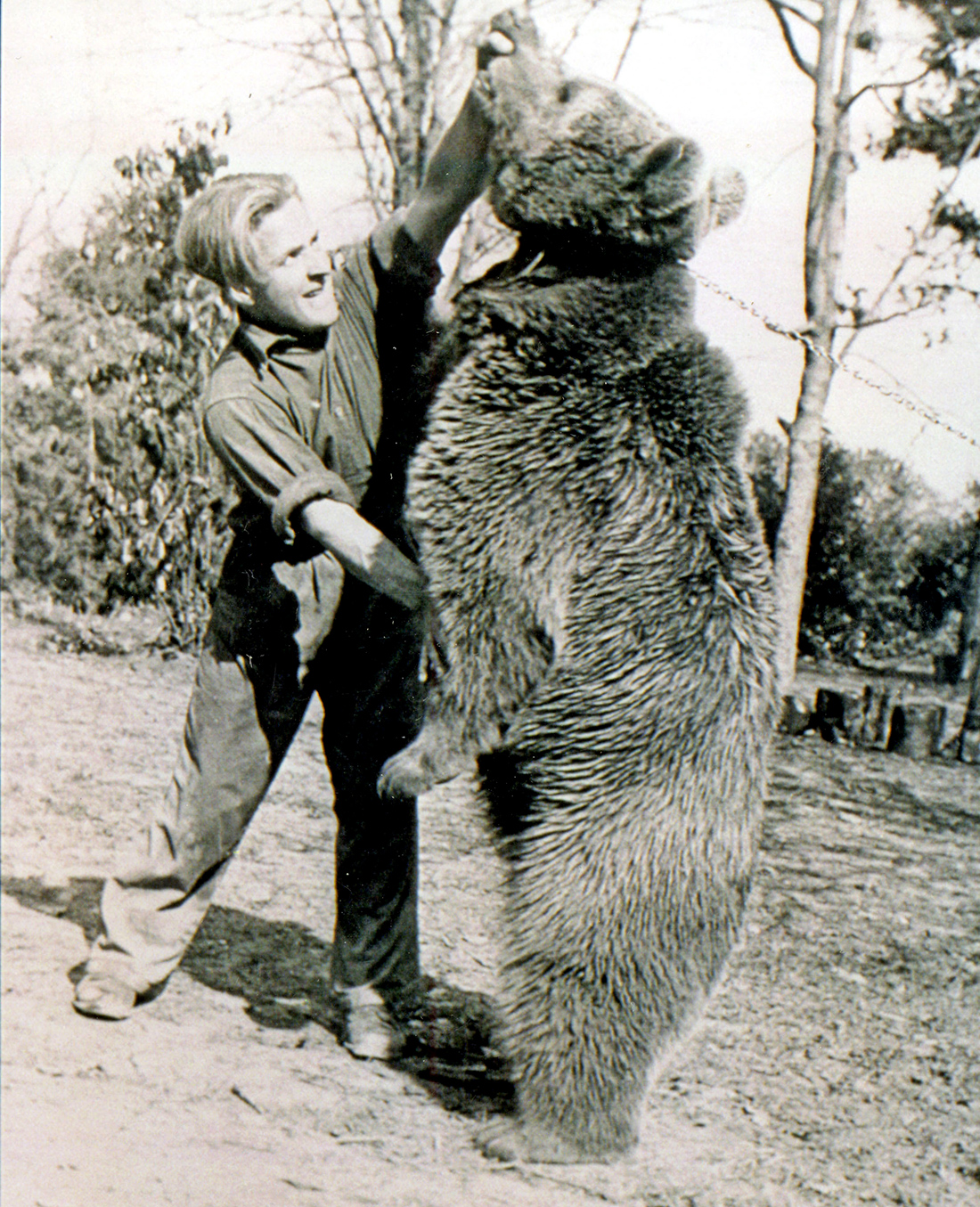
Bears announced a few times in the history of warfare, but one bear in particular became famous for his exploits against the Germans during World War Ii.
Voytek was a Syrian chocolate-brown conduct cub adopted past troops from a Smooth supply company who purchased him while they were stationed in Islamic republic of iran. The acquit grew upward drinking condensed milk from a vodka canteen and drinking beer. When the Polish troops were moved around as the war progressed, Voytek went also: to battle zones in Republic of iraq, Palestine, Egypt and so Italy.
Before long, Voytek had grown to weigh more than 880 pounds (400 kg) and stood more than 6 feet (1.8 meters) tall. In fourth dimension, he was enlisted as a individual soldier in the supply company, with his own paybook, rank and series number, and eventually rose to the rank of corporal in the Smoothen Army. In 1944, Voytek was sent with his unit to Monte Casino in Italia, during one of bloodiest series of battles of World War Ii, where he helped carry crates of armament.
In his afterwards years, Voytek lived at the Edinburgh Zoo in Scotland, where he'd been stationed with his adopted supply company at the end of the war. He became a popular public figure in the United Kingdom, and often appeared on children'due south television shows until his death in 1963.
Elephants
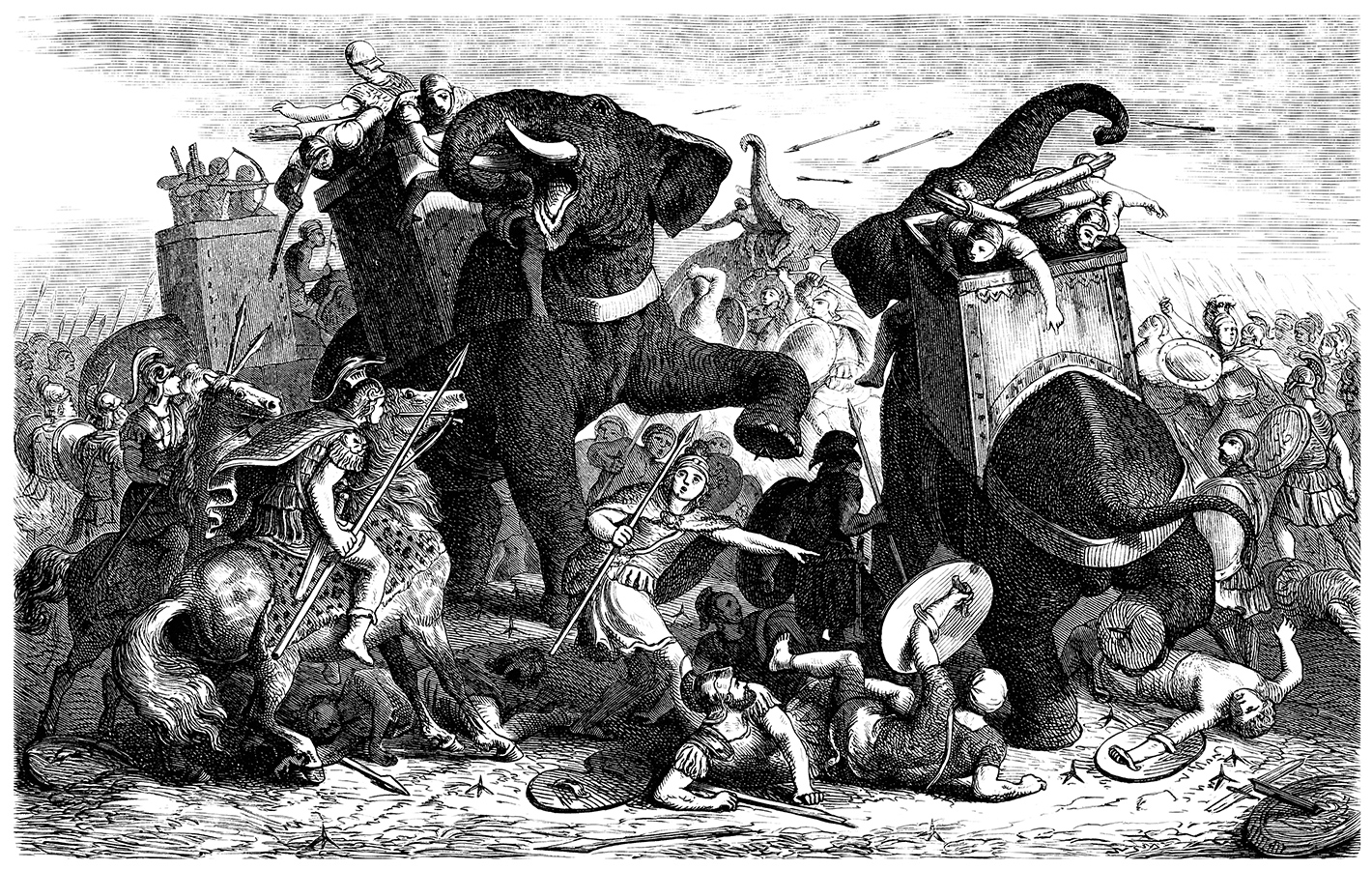
Elephants, the largest state mammals on World, made their mark in ancient warfare as creatures capable of devastating packed formations of enemy troops. Elephants could bruise enemy soldiers, gore them with their tusks and even throw them with their trunks. They were often armored confronting enemy weapons, or had their tusks tipped with iron spikes. Some even carried a raised fighting platform on their backs for archers and javelin throwers.
Elephants were beginning used in state of war in India around the quaternary century B.C., many centuries after wild Asian elephants first began to be tamed there around 4500 B.C. Elephants breed slowly and the convict herds were small-scale, then wild males were normally caught and trained to be war elephants. In 331 B.C., the invading armies of Alexander the Great encountered the war elephants of the Western farsi Empire for the outset time at the Boxing of Gaugamela. The elephants terrified Alexander'due south soldiers, but that didn't stop them from winning the battle, and presently Alexander added all of Persia's war elephants to his own forces.
In 280 B.C., the king Pyrrhus of Epirus borrowed more than 20 African war elephants from the Egyptian rex Ptolemy 2, to assail the armies of the Roman Republic at the Battle of Heraclea in southern Italy. The elephants helped to rout the Romans, but by the time of the battle of Asculum the adjacent year, the Romans had developed anti-elephant wagons covered in fe spikes and troopers were specially trained to assault the elephants with javelins. Pyrrhus also won that boxing against Rome, simply with huge losses among his troops, giving ascent to the term "a Phyrric victory." The Romans as well faced elephants in the Punic wars against Carthage, and in the Second Punic War (201-218 B.C.), the Carthaginian general Hannibal Barca led war elephants over the Alps to assault Italy from the north. Many animals died during the crossing.
Afterwards, the Romans used war elephants themselves in their conquests in Spain and Gaul, where they were known for their terrifying psychological issue on undisciplined "barbarians." War elephants were also used in the Roman invasion of U.k. under the Emperor Claudius in 43 A.D. Ultimately, elephants proved unsuited to state of war — they were too vulnerable to massed weapons, and too likely to panic: the terrified giant beasts oft caused as much damage to their ain forces as they did to the enemy.
Elephants continued to be used as state of war animals in Asia and India until contempo centuries, and some animals continue today in formalism military machine roles, but the emerging use of cannons somewhen ended their part in gainsay.
Camels

Camels still serve as military machine patrol mounts in the deserts, mountains and wastelands of several regions of the globe. Although a camel cannot accuse as fast equally a horse, they are valued for their ability to endure long marches in harsh and sometimes virtually waterless weather condition.
Archaeologists call up camels were first tamed as pack animals and as herd animals for milk and meat in North Africa and the Middle E effectually three,000 years ago. The beginning recorded use of camels in state of war is in 853 B.C., when the Arab king Gindibu fielded 1,000 camels in an centrolineal army united against the Assyrians at the Battle of Qarqar, in modernistic-day Syria. In later on centuries, the Parthian and Sassanid Persians sometimes armored their camels entirely, similar cataphract heavy horse cavalry.
From the seventh century A.D., Arab, Berber and Moorish camel troops were an important role of the Muslim armies that conquered the Middle East, North Africa, and southern Spain. Foreign camel troops were frequently employed in the European colonial armies of the 18th and 19th centuries, in the Middle East, Africa and India. Several countries still maintain units of camel cavalry descended from those colonial forces.
In Globe War I, both the Ottoman and Allied forces in the Middle Due east included camel cavalry among their forces. Camels were also used in the Arab rebellion against Ottoman rule in the Hejaz region of the Arabian Peninsula, with the aid of the British Army officer T.Due east. Lawrence, known equally "Lawrence of Arabia."
Dogs

Dogs may be human's best friends, only they can likewise be fearsome opponents. The first dogs of state of war were probably hunting dogs that joined their masters in raids on hostile human communities. Since then, large dog breeds take served on battlefields, as scouts and as defensive sentries for everyone from the aboriginal Egyptians to Native American peoples.
One of the earliest accounts of dogs fighting in battle comes from the early kingdom of Lydia in Asia Minor effectually 600 B.C., where a pack of Lydian war dogs routed and killed a number of invaders.
The Roman legions bred their ain war dogs from an ancient mastiff-like breed known equally the Molloser. They were mainly used equally watchdogs or for scouting, but some were equipped with spiked collars and armor, and were trained to fight in formation.
Today'southward dogs of war are mainly express to the battlefield roles of messengers, trackers, scouts, and sentries alongside human handlers. They are also used in war machine policing tasks, such as the U.S. military machine'southward flop-sniffing dogs in Afghanistan and Republic of iraq.
Horses

No other animal has played so groovy a role in the history of warfare as the horse. Archaeologists have constitute evidence of the apply of horses by raiding nomads as early equally 5,000 years agone on the steppes of cardinal Asia and eastern Europe, where it is idea horses were kickoff domesticated.
Several "kurgan" burial mounds across an surface area from Ukraine to Kazakhstan, some dated to as early every bit 3000 B.C., hold the remains of horses that were sacrificed at the death of their nomad rider and cached aslope him, forth with bridles, saddles, and weapons. After burying mounds from the same region, dated to effectually 2000 B.C., agree the earliest horse-fatigued chariots.
The use of horses in war is also documented in ancient historical documents, including the War Panel of the Standard of Ur, from the Mesopotamian city of Sumer in around 2500 B.C., which shows horses or donkeys pulling a four-wheeled wagon. From around 1600 B.C., the powerful Hittite civilization in Anatolia were famed for their use of horse-drawn war chariots equally a stable platform for fighting with bows and spears. And in the centuries that followed, chariots were in use from ancient Egypt to aboriginal China.
1 of the world's earliest war stories, Homer'due south "Iliad," from effectually 800 B.C., describes the heroes of the Trojan State of war driving to battle in horse-fatigued chariots, before dismounting to fight on foot. Troy itself, Homer said, was famed for King Priam's magnificent herds of horses — and the trick of the Trojan Horse sealed the fate of the city.
The invention of an effective saddle and stirrup, along with larger breeds of horses that could carry a rider in heavy armor, gave mounted warriors a decisive edge. Elementary stirrups were used in India and China from around 500 B.C., and the use of heavily armored mounted warriors, known every bit cataphracts, developed in the Median and Farsi kingdoms of ancient Islamic republic of iran at nigh the same time.
Horses and mounted cavalry accept played a major function in almost every major state of war ever since — from the most nonstop wars of the postal service-Roman globe, to the Hun and Mongol invasions, to the Muslim conquests and the Crusades; in the New World, the Napoleonic Wars, and the Crimean War, where the Light Brigade made its famous charge; and in the many colonial and territorial wars waged around the world in recent centuries.
The all-encompassing use of horses in combat did not end until the era of modernistic warfare, when, trucks, tanks and machine guns began to make the creatures obsolete. Several equus caballus charges were carried out during World War I, just only a few were used in Earth War Two. Ane of the last instances of horses in warfare was a successful accuse by the Savoia Cavalleria, an Italian equus caballus regiment, against Russian infantry at Isbushenskij, on the Eastern Front, in 1942.
Dolphins
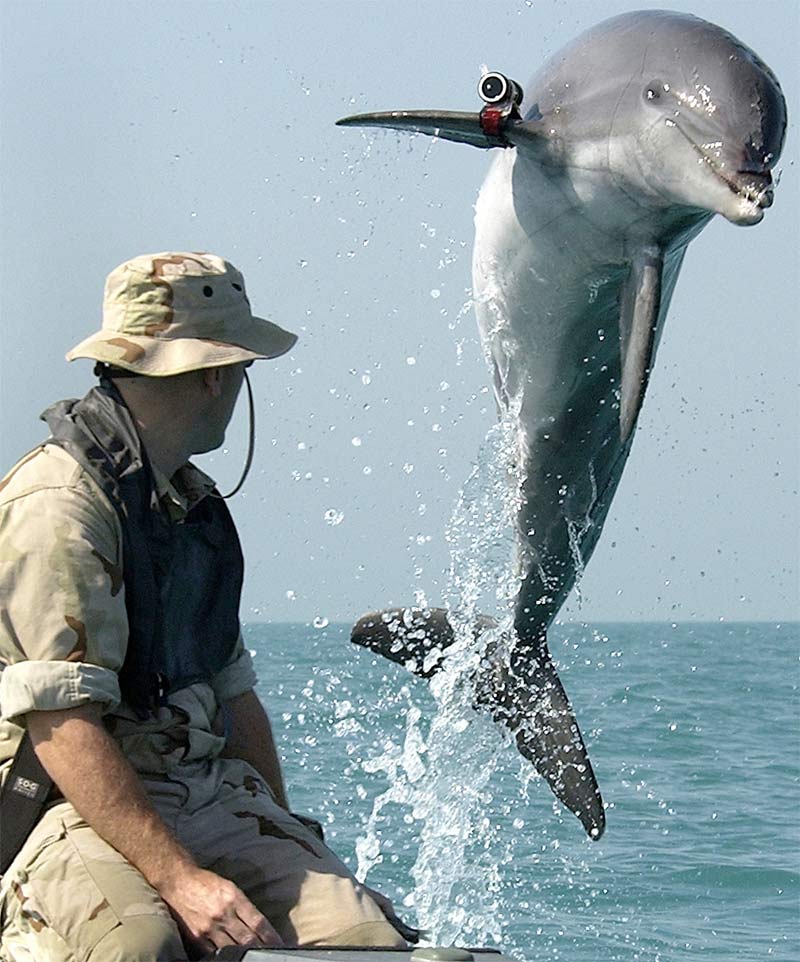
The U.South. Navy has been training bottlenose dolphins to deport out marine patrols since the 1960s, after they were identified for their intelligence and war machine bent in a program of tests of xix different types of animals, including birds and sharks.
A dolphin'southward primary war machine asset is its precise echolocation sense, which lets information technology identify objects underwater that would be invisible to human divers. Dolphins also use their eyes underwater, but by emitting a series of high-pitched squeaks and listening for the echoes that bounce back, they can brand a mental image of objects they can't see.
U.Southward. Navy dolphins are deployed with teams of human being handlers on patrols of Navy harbors and other aircraft areas to look for threats such as marine mines, or "limpet bombs" attached to the hulls of warships. The dolphins are trained to spot strange objects and report back to their human handlers with a type of "yes" and "no" response. The handler can follow up on a "yes" response by sending the dolphin to mark the object's location with a buoy line.
These mine-marker abilities came in handy during the Persian Gulf War and in the Iraq War, when Navy dolphins helped clear mines from the port of Umm Qasr in southern Iraq. U.S. Navy dolphins are too trained to help people having difficulty in the water, and to locate enemy divers or swimmers. Just, the Navy denies rumors information technology has trained dolphins to attack, or to use underwater weapons.
Bees
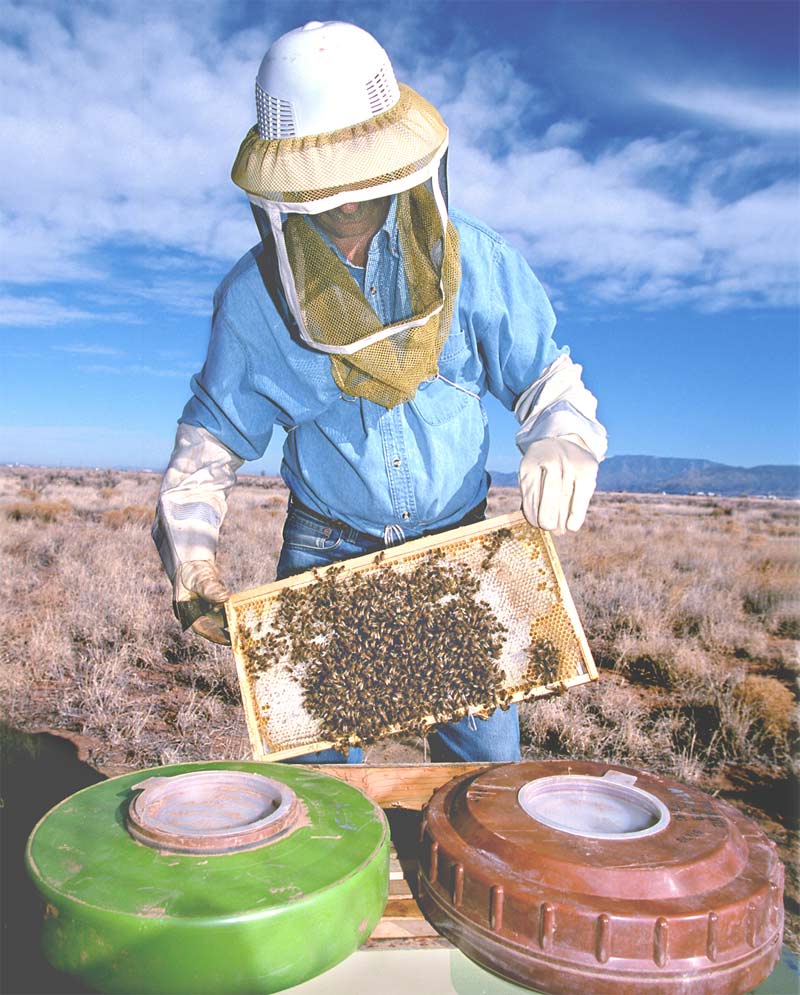
The ancient Greeks and Romans are among many ancient peoples known to have used bees equally tiny weapons of state of war. Attackers would sometimes catapult beehives over the walls of besieged cities, and the defenders of Themiscyra, a Greek town famous for its production of dear, defeated the attacking Romans in 72 B.C. past sending swarms of bees through the mines that had been dug beneath their walls.
The Romans seem to have an peculiarly bad history with bees. In 69 B.C., the Heptakometes of the Trebizond region in Turkey tricked invading soldiers under the control of the Roman general Pompey by leaving hives filled with poisoned beloved along the route of their march. Chemists now think the poison was a grayanotoxin that tin can course in honey, which is rarely lethal to humans but makes them very sick, and the Heptakometes were able to easily defeat the vomiting, intoxicated Romans.
At the Battle of Tanga, in German East Africa (now Kenya) during Earth War I, both the invading British forces and the defending Germans were attacked on the battlefield past swarms of angry bees, which caused the British assault to fail when a swarm drove off one of their infantry regiments. British propaganda from the fourth dimension portrayed the bee assault as a fiendish German plot that used trip wires to aggravate the hives of the insects.
During the Vietnam War in the 1960s and 1970s, Viet Cong guerillas were said to have advisedly relocated wild hives of the Asian giant honeybee, Apis dorsata, forth the trails used past enemy patrols. One fighter would look nearby until a patrol approached, earlier setting off a firework nearly the hive to aggravate the bees and attack the enemy soldiers.
Cattle
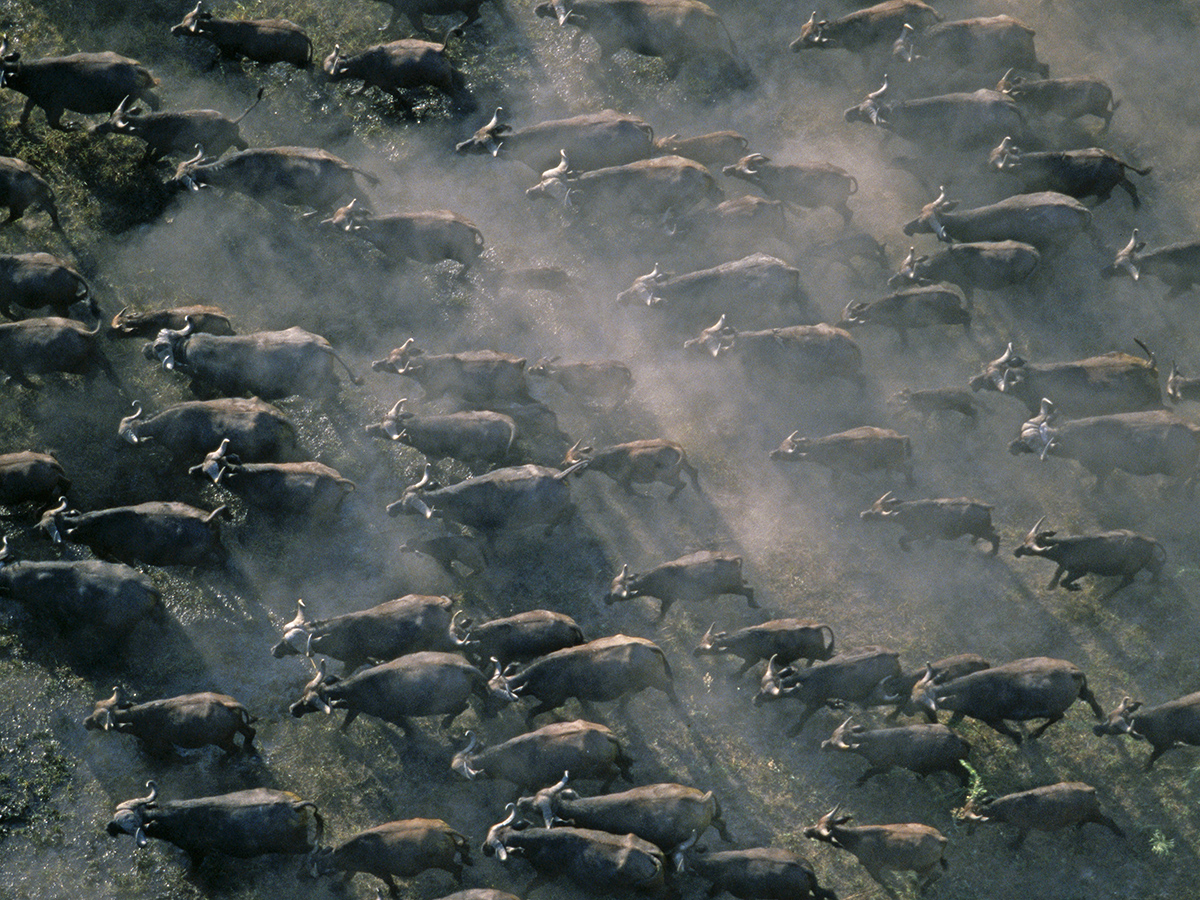
Stampeding cattle are one of nature's irresistable forces. They have been used many times in the history of warfare in attempts to crush opposing forces — merely ofttimes with mixed results.
At the Battle of Tondibi in West Africa in 1591, the defending ground forces of the Songhai Empire opened the engagement with a charge of one,000 stampeding cattle confronting the lines of Moroccan infantry — a tactic that had worked in the past confronting enemies who had no guns. Merely the Moroccans did have guns, which spooked the cattle. The creatures stampeded back into the Songhai army, who lost the boxing and somewhen lost control of their empire equally a issue.
In 1671, the Welsh buccaneer Henry Morgan (later Sir Henry, and the British governor of Jamaica), led an ground forces of 1,000 pirates and freebooters to attack the Spanish colony of Panama City. The Panamanians had only ane,200 troops to defend the city, but they also deployed a herd of two,400 wild cattle, which they planned to stampede into the pirate army.
But, the pirates stationed themselves behind a patch of swampland, which made the Panamanian cavalry and cattle charges impossible. The wild bulls were finally released late in the battle, but the pirates managed to divert the stampede by waving rags at the charging bulls, and eventually shot down all the poor beasts with muskets.
Morgan and the pirate ground forces went on to capture and sack Panama City, which burned down a few days later, after several mysterious fires broke out. It was rumored that Morgan himself ordered the city to be burned then his drunken pirate army would exist forced to move on elsewhere.
Mosquitos
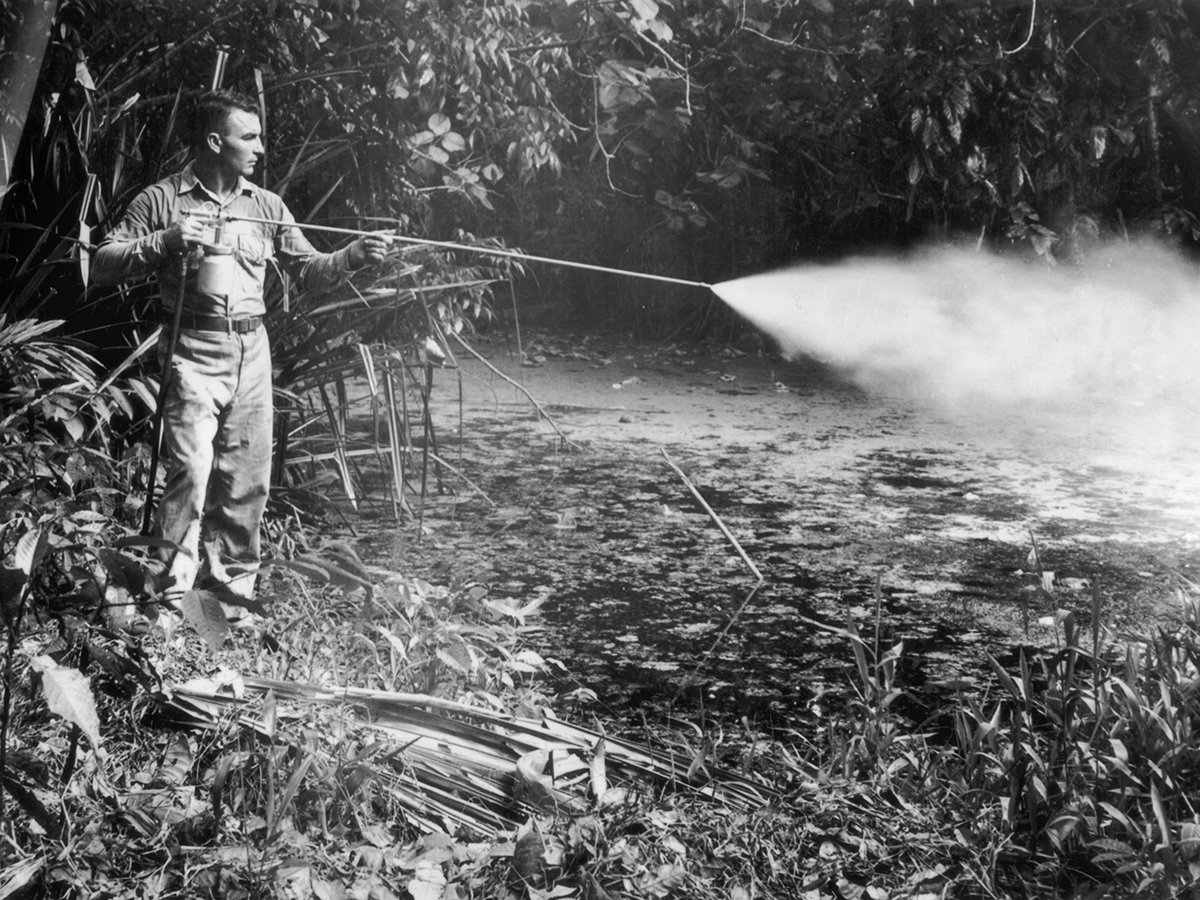
Late in World State of war Two, the German language war machine forces in control of Italian republic ordered the flooding of the Pontine Marshes southward of Rome, in an endeavor to create a malaria-filled swamp that would slow the Allied accelerate. The marshes had been drained in a major development projection in the 1920s and 1930s. But after Italian republic changed sides in 1943, and German forces took control of the country, they ordered the pumps that kept the marshes under control to be stopped.
Presently the marshes started to fill with stagnant water, which pro-Nazi scientists had foretold would encourage the render of the malarial mosquito species Anopheles labranchiae to the marshes, as well every bit causing long-term impairment to the agriculture of the region.
Over the months that followed, the Allies and Germans fought several "Battles of the Swamps" in the Pontine Marshes, as the water and mud got deeper and among worsening outbreaks of musquito-borne malaria that badly affected soldiers on both sides.
Just in the end, the mosquitos and malaria were not enough to terminate the Allied advance. Later the war the Pontine Marshes were drained once more, and the region has been free of malaria since the 1950s.
Source: https://www.livescience.com/60518-animals-used-in-warfare.html
Posted by: vallierekeisheiled.blogspot.com

0 Response to "What Effects Did Animals Have On World War Ii How Were Animals Used In World War 2"
Post a Comment